Get the Lowdown on Sushi Grade Fish...
~~~
Find Out...
What makes it "Sushi Grade" instead of being just regular ole' Fish?
What do you look for before you buy so you know that it is safe to eat raw?
- and -
Where should you buy it?...
So...What is "Sushi Grade?"

Sushi grade fish is not the guarantee of safe to eat raw fish and seafood that the name implies. It seems that it is not even associated with the FDA or any other governmental agency at all.
Why is this important?
It is important because the term is thrown around in a way that seems to imply that the raw fish and seafood that you buy with this name attached to it has been captured, stored, processed and sold with adherence to some kind of rules and/or regulations that would guarantee that it is safe to consume raw.
When in reality, that is not necessarily so. Interpretation and implementation of this term is up to the provider of the seafood.
The FDA does however, commonly refer to raw seafood, raw fish, sushi and sashimi repeatedly however. Just not in reference to sushi grade fish.
So where does the term "Sushi grade fish" or "Sashimi grade fish" come from?
Well...
It seems that sushi grade fish and sashimi grade fish are more or less marketing terms that have been created to identify supposedly high-grade fish that can be eaten raw, but are not themselves tied to any actual rules or procedures set by a governmental body nor are they monitored and implemented in any way to guarantee such a level of quality.
Wow.
So if these terms (sushi grade fish or sashimi grade fish) are more or less marketing related and tied more to selling to the consumer rather than being associated with the safety rules written to insure the consumer's safety (which means that they almost essentially mean nothing), then what does the FDA actually have to say about the rules and guidelines surrounding the capturing, storage, processing and consumption of seafood that is intended to be served raw?
Well that's a very good question. And that is what we intend to find out.
Because of this clarification, the rest of this section of the discussion will be in reference to what the FDA actually defines as its required rules on how to insure that raw seafood is provided to the consumer in a safely consumable raw state.
After all, that is what truly would define more closely what a "sushi grade fish" is since it something that is actually documented and enforced instead of being just some marketing term coined to increase sales and give consumers a false level of comfort.
So to begin, let's start with what the FDA says in their document www.fda.gov/downloads/good/guidanceregulation/ucm251970.pdf.
This document defines the guidelines that processors of fish are suppose to follow.
We will focus mainly on the parts concerning raw seafood such as that used in sushi and sashimi.
FDA guidelines for Processors of Fish and Fishery Products
The FDA provides guidance to help fish processors in the development of their HACCP (Hazard Analysis Critical Control Point) plans. This plan will help them put control strategies in place to insure that seafood is safe for consumption.
Part of the reason why it is confusing and difficult to get clear answers as to the rules and regulations regarding raw seafood consumption is that the controls are based on determining which hazards are likely to occur.
And this is decided partly based on what the intended use of the seafood product is going to be along with what hazards are known to occur in a particular fish itself.
For instance.
Hazard NOT significant if intended use is to be Cooked
If a fish is to be packaged raw and frozen but cooked thoroughly by the end consumer before consumption, then the risk of human sickness caused by bacterial pathogens or parasites is virtually non-existent since heating raw fish properly will kill both of these; even if the fish has been identified as one know to carry such parasites.
In this case, the hazard would not be considered significant and the measures that would otherwise be implemented to kill these parasites (such as freezing for specific periods of time at specific temperatures), would not have to be done.
Hazard IS significant if intended use is to be eaten Raw
Conversely, if the same exact fish stated in the previous example was known to the processor to be one that would be consumed raw, such as in sushi or sashimi (i.e. sushi grade fish), then the hazard would be considered significant and measures would need to be taken to kill these parasites. Namely by freezing in this case.
See below for FDA recommendations on this.
FDA Recommendations on Freezing to Kill Parasites in Fish
• Freezing and storing at an ambient temperature of -4°F (-20°C) or below for 7 days (total time);
OR
• Freezing at an ambient temperature of -31°F (-35°C) or below until solid and storing at an ambient temperature of -31°F (-35°C) or below for 15 hours;
OR
• Freezing at an ambient temperature of -31°F (-35°C) or below until solid and storing at an ambient temperature of -4°F (-20°C) or below for 24 hours.
So if a hazard has been identified by the fish processor because the known recipient will be consuming the fish in a raw state, then it would be up to the fish processor to insure that the fish is frozen per the rules stated above before the fish is sold to the recipient.
What if the Fish Processor does not know what the Recipient's Intended use of the fish is?
In this case, the primary processor (fish processor in this case) would need to obtain documented assurance that the secondary processor (subsequent processor, restauranteur, institutional user, etc.,) will handle the fish in a way that would kill any parasites present prior to consumption.
In this scenario the primary processor would not need to identify parasites as a significant hazard because the control to eliminate the parasite will be identified and properly handled by the subsequent processor (either by cooking, freezing, etc.,).
It's a way of passing the buck to the one that will be implementing the control. Which could technically go all the way down the line to the restaurant (who will hopefully either cook it or freeze it properly), or maybe even you if you buy from a grocery store and either cook the fish or consume it raw (in which case it should be identified as appropriate for raw consumption and being so hopefully has already been frozen properly to kill all parasites).
FDA Identifies other Hazards, not just Parasites
We need to keep in mind that although parasites are the main focus of discussion in many documents I have seen on this subject both written and online, the FDA does require controls for other general hazards.
One is "Natural Toxins in Seafood" and the other is "Fish considered to be Scombrotoxin-Forming Species". Click on the appropriate link to see the table on each of these.
Note that the controls for Natural Toxins in Seafood are mainly to either fish in NSSP (National Shellfish Sanitation Program) approved waters or buy from approved sources.
Scombrotoxin formation is caused by time/temperature abuse. The control is to buy from federally inspected suppliers or directly from a fishing boat.
Scombotoxin formation is a seafood related poisoning caused by time and temperature abuse of certain species of fish.
It is important to note because unlike with parasites, Scombrotoxin formation cannot be eliminated by cooking.
Symptoms include tingling or burning in or around the mouth or throat; rash or hives on the upper body; drop in blood pressure; headache; dizziness; itching of the skin; nausea; vomiting; diarrhea; asthmatic-like constriction of the air passage; heart palpitation; and respiratory distress. Symptoms usually occur within a few minutes to a few hours of consumption and last from 12 hours to a few days.
So What Conclusions can we form about "Sushi Grade Fish" knowing what we know now?
We can know that (and this bears repeating):
Sushi grade fish and sashimi grade fish are more or less marketing terms that have been created to identify supposedly high-grade fish that can be eaten raw, but are not themselves tied to any actual rules or procedures set by a governmental body nor are they monitored and implemented in any way to guarantee such a level of quality.
Because of this, before buying or consuming seafood associated with such terms the consumer should educate themselves and use their best judgement based on their understanding of FDA guidelines.
This might include asking educated questions of their seafood provider (whether that be a grocer, fish marketer, restaurant establishment, etc.,) to gain the required level of confidence that their seafood has been properly handled and is free of bacterial pathogens and parasites.
How can we best prepare ourselves before going out to purchase "Sushi Grade Fish" or fish that is to be eaten raw?
Being educated prior to going to your local fish market or grocery store will help you tremendously in asking pertinent relevant questions in determining whether you are purchasing sushi grade fish or not.
Knowing which fish you intend to purchase will help also.
Example: Fish from your Grocer
For instance. If you were wanting to purchase salmon to eat as sashimi at home, you should first look at the parasite chart to see if it is a fish which is known to possibly carry parasites.
In this case, YES, it is in the chart so this is a potential hazard.
So in talking to your fish provider (let's say your grocer), you could ask if the salmon they are selling is suitable for raw consumption and then also ask whether they or their seafood provider took measures to properly eradicate any potential bacterial pathogens and parasites by freezing to the proper temperatures.
As for the risk of Scombrotoxin, just know that the at risk fish and recommended temperatures are in the table here if you ever should need them and just try to observe that the fish are iced and stored properly as far as you can tell. The best thing you can do is find a reliable and reputable source and stick with them.
Example: Fish off of a Boat
Let's say that you are purchasing this same salmon straight off of a boat. It is a mistake to assume that "fresher" (like right off the boat) is "safer".
But here too you can ask the same questions, because you are educated. You know that salmon is known to potentially carry parasites and you want to be safe.
Unless the boat is equipped to freeze the fish to proper "FDA" temperatures for the required amount of time prior to being sold to you, any fish that you consume raw off of this boat is at your own risk if they say that they don't have the ability to freeze and eradicate any parasites. In this case, cooking is the only way to safely consume any salmon off of this boat in this scenerio.
There are many other scenerios we could cover, but the main thing at this point is this:
At least now you know what is required of who at what point in the process, so you know what questions to ask.
Common Parasites in Seafood
Natural Toxins in Seafood
Fish Considered to be Scombrotoxin-Forming Species
What do you look for before you buy to know that the Fish is Fresh and should be safe to eat raw?
Well, a huge portion of the burden has already been lifted if you follow the recommendations in the previous section on "What is Sushi Grade Fish?".
That should help assure you that you have tried to screen for the risk of bacteria, parasites and scombrotoxin.
In this section let's take it a step further and focus on what to actually "look" for in the fish that you are thinking about purchasing.
This is a visual inspection, providing another layer of protection for you and your family. We'll review what to look for in a filet and also a whole fish.
What to look for in a Sushi Grade Fish Fillet to be eaten as Sushi or Sashimi
Here's a few things to look for:
1. Look for fillets that are bright in color, not dull or darkened or having pearly rainbow discolorations.
2. Smell the fish. It should not smell "fishy" but rather fresh with a sea smell.
3. Be suspicious of fish that is unusually bright red. Some fish are treated with carbon monoxide which gives the fish an unnatural red color to make it appear fresher. If you are unsure, ask if it has been treated with carbon monoxide.
4. Buy loins or thick fillets. They are much better for slicing for sashimi or Nigiri sushi. For this reason also try to find fillets at least 1 inch thick so that it will be wide enough for Nigiri sushi.
5. Avoid purchasing Tuna that has too many distinct white lines in it. There are many reasons for this. For one, it makes the meat "stringy" and unpleasant to eat. Especially for Sashimi or Nigiri Sushi. It also can separate and come apart at the lines. These could be cooked and would be ok. And they would be passable for maki sushi (rolled sushi).
6. Make sure your fillets are on fresh ice, not melting ice or laying in any kind of water and ice. They should also be in an enclosed case or under cover.
What to look for in a Whole Fish to be eaten as Sushi or Sashimi
Before you head out to the fish market or local grocery store to pick out a sushi grade fish you intend to carve up and eat as Sushi or Sashimi, review the following tips so you'll be prepared to pick out the best one of the bunch.
1. The eyes have it! They are the windows to determining fishy freshness. Look for eyes that are bright, clear and bulging; not dull, cloudy, or sunken in.
This will be the best single indicator of freshness, so check out those eyes!
2.
The fish should be firm to the touch and bounce back when pressed, not
squishy. It should also be shiny. If the fish is firm but not shiny it
was probably frozen at some point. (If the fish was intended to be sold
for raw consumption and is one known to possibly carry certain
parasites, then it was probably frozen according to FDA guidelines to
eliminate any parasitic risks.)
3. The scales should be tight and intact, not loose.
4. Smell the fish. It should not smell fishy but like clean water or the ocean.
5. Check out the gills. They should be red, clean and moist not slimy or dry. Any traces of slime could be an indication of spoiled flesh or disease.
6. Avoid fish that has dulled or discolored patches in it, looks green or has yellow coloring to it (unless that is the natural color of the fish) or whose flesh is darkening.
7. The fins should be intact and moist, not dry and/or torn.
8. Make sure in your search for sushi grade fish, that your fillets are on fresh ice, not melting ice or laying in any kind of water and ice. They should also be in an enclosed case or under cover.
Where to Buy Sushi Grade Fish
So now you are educated.
You know how to screen your sushi grade fish and fillets for bacterial pathogens and parasites and also know how to eyeball each to tell if they look and feel fresh.
But where do you go to make your actual purchase?
Well a lot of that obviously will depend on what your options are based on where you live and your availability to fresh seafood. Whether that be from the local dock, fish market, grocery store or online sources.
Let's go over each one separately.
Local dock or Fish Market
This option will probably provide you with the freshest selection you have limited by the fish that are available in your area.
You will have to do your due diligence however and ask the right questions to insure that your fish has had all bacteria and parasites eliminated (by freezing for the proper amount of time) and that scombrotoxin is not an issue (make sure fish is well iced, looks fresh, etc.,).
Other than that, once you find a consistently reliable source here, this is probably one of the best places to get your sushi grade fish for sushi and sashimi.
Grocery Store
This is another option if your local grocery store carries sushi grade fish.
If it is not labeled as such, be sure to ask to make sure. And go ahead and ask the educated questions again like has the fish been properly frozen according to FDA guidelines to eliminate any risks of bacteria and parasites.
You can never be too safe. And if you come to trust that your grocer can provide you with a safe and properly handled supply of sushi grade fish, then you are lucky. Maybe you have a grocer that is closer to the coast.
Generally though, I would be more hesitant to get my sushi grade fish from a local grocer than from a reliable online source.
And here's why. Like in my case, I live in a central part of the U.S. So delivery of fish to these grocery stores can make the fish up to several weeks old before I can get it and may have not been properly handled.
Which at this point would make the fish not suitable for eating raw anymore.
Online Seafood Store
This is the option I prefer over getting it from my local grocer.
If you find a good reliable source, the fish will be properly handled when caught (blood drained, packed in ice, etc.,), will be stored properly (preferably -20 degree coolers) and will only be a couple of days old when shipped to you. Normally shipment will be overnight.
Shipping costs can be pricey, but for the quality of the seafood and the speed of delivery it is worth it and is no more than a good tip would be at a fine sushi bar.
For me and the area that I live in, I find this option to be far more reliable than my local grocer.
If you don't have a good local fish market or a local grocer available that you trust for your sushi grade fish, then try Catalina Offshore Products. They are who I use and highly recommend.
Have Any Questions about Sushi Grade Fish? ... or Maybe you have some Knowledge or Experiences that you'd like to Share with the Rest of Us?
I know that this page couldn't have answered every single question you may have had about sushi grade fish, so don't be shy! Ask away...
Or maybe you don't have a question at all but rather have a juicy bit of information that you think would benefit others? Feel free to share that...
And of course this exercise wouldn't be complete if I didn't ask you to share some interesting Sushi Grade Fish experiences that you may have had...the Good...the Bad...and the UGLY...(especially the ugly!)
What Others Have Asked or Shared...
Click below to see contributions from other visitors to this page...
Process of defrosting frozen fish 




So after you buy your sushi grade fish, you freeze it at -20c for 7 days. How do you properly defrost it? Just take it out and leave it in the fridge?
I've been using sushi grade fish for my small sushi restaurant for 1 month now... 




I've been using sushi grade fish for my small sushi restaurant for 1 month now... I was to use a more economical grade of fish to lower my sushi roll prices. …
What about asking well-known restaurants like Nobu and Wuzuzu in Las Vegas if their fish has been frozen to kill parasites? Would it be insulting to ask that question? 




I will be spending a couple of days in Las Vegas, NV. There are a few restaurants offering sushi, like Nobu and Wuzuzu. These say their fish comes fresh …
Does preparing fish as Gravlax or Ceviche kill parasites? If curing fish using these techniques, do the same rules apply as they do with Sushi and Sushi Grade Fish? 




So, I'm making gravlax and wonder if the curing process provides any additional protection.
There seems to be some confusion in the blogosphere and …
A Few questions about Salmon! 




Hello everyone,
I'm currently doing some research regarding the Salmon market in the United States, but specifically for Sushi. I have many questions, …
Purchasing flash frozen fish Not rated yet
My wife and I love sushi and since I love to cook, my next challenge is mastering sushi at home.
We are lucky to have a large market (Mitsuwa Marketplace) …
Like this Page?
|
|
Follow me on Pinterest


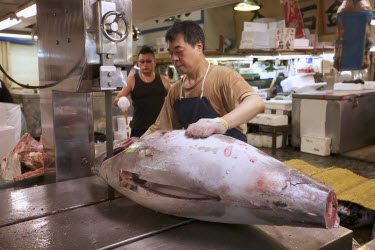
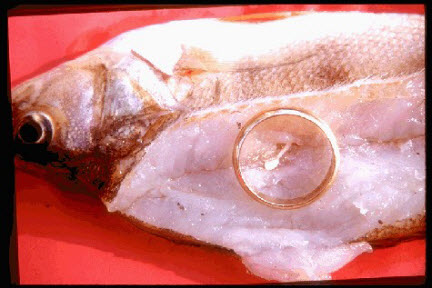
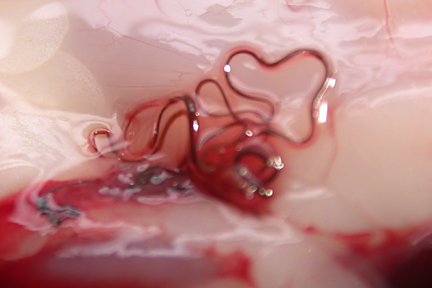
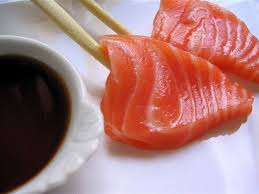

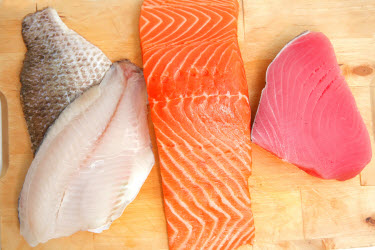
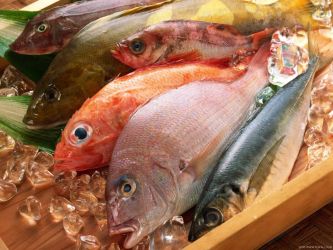

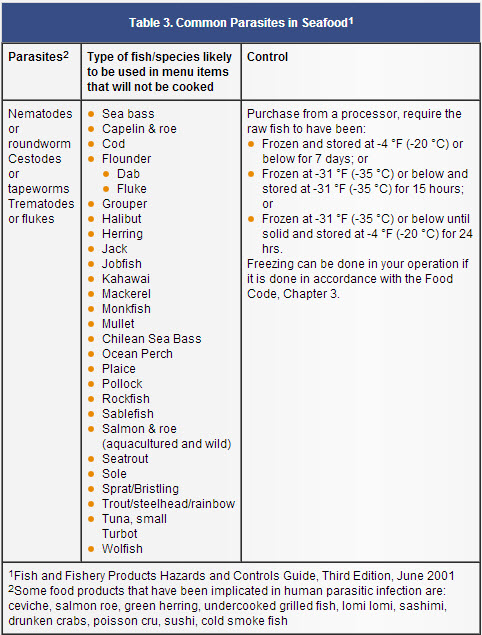
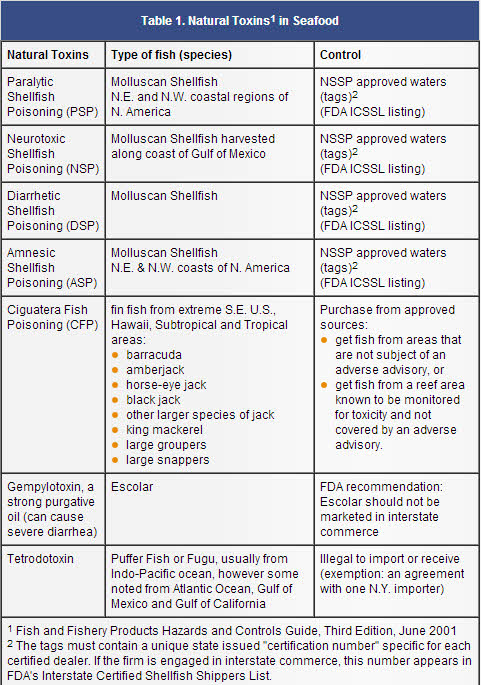
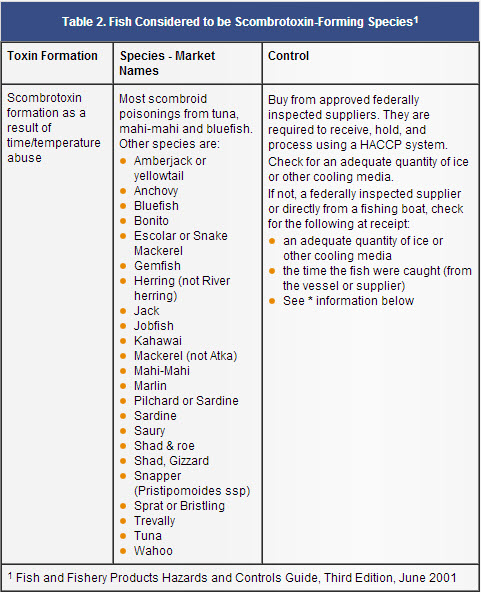

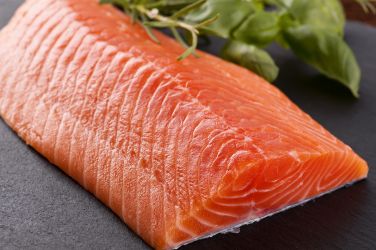
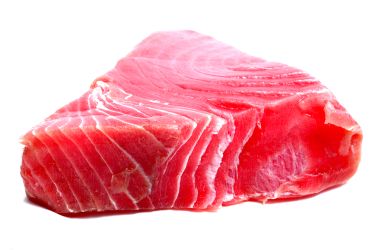
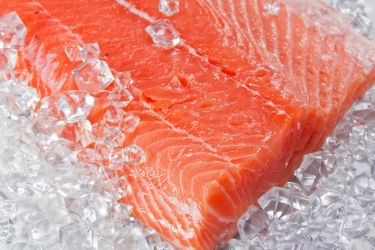

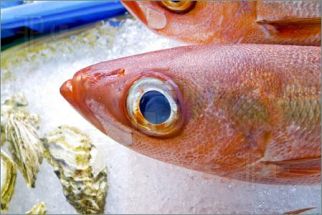
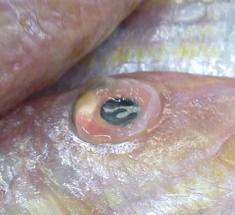
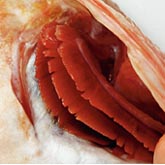









New! Comments
Have your say about what you just read! Leave me a comment in the box below.